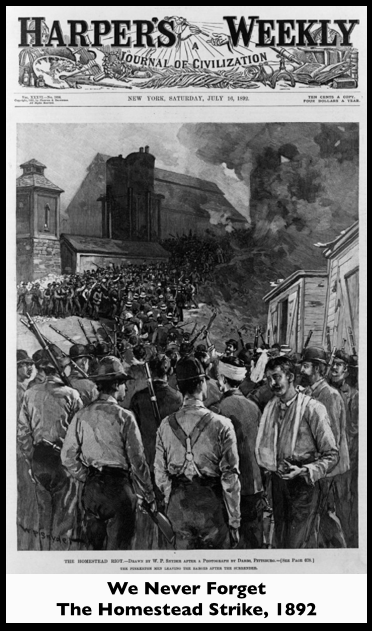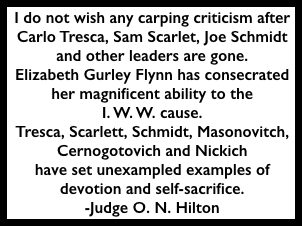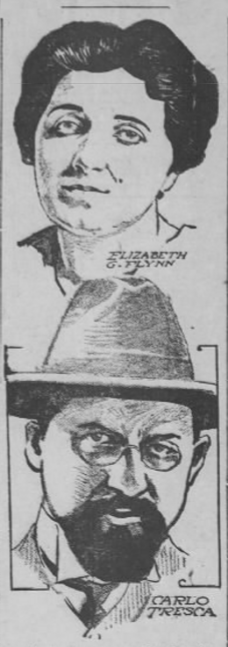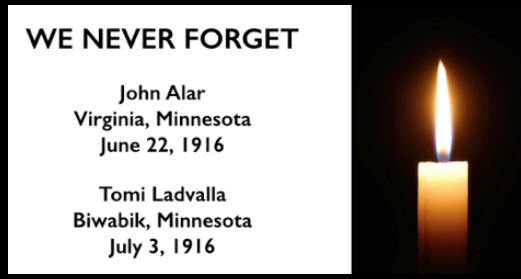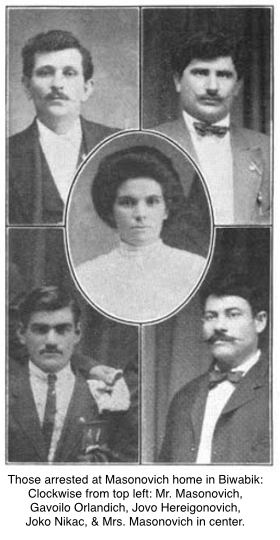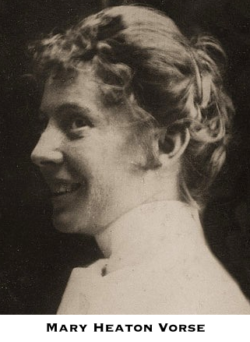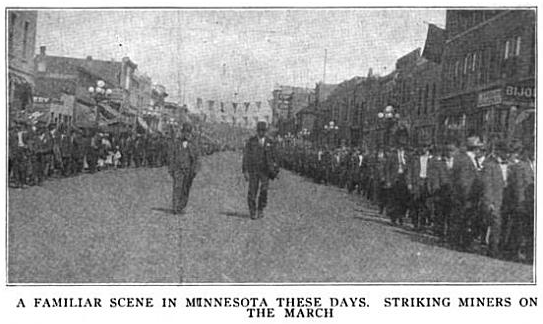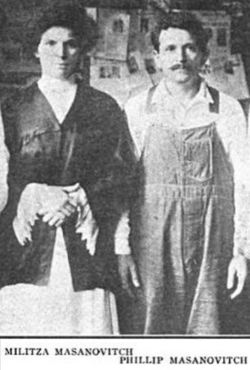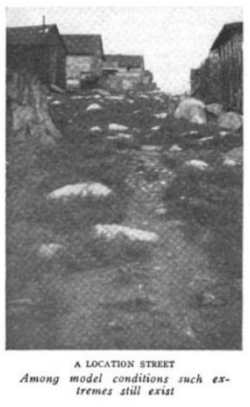 ———-
———-
Hellraisers Journal – Monday October 27, 1919
Report from Front Lines of Great Steel Strike by Mary Heaton Vorse
From the Duluth Labor World of October 25, 1919:
[Part II.]
STATE TROOPERS TOOLS OF STEEL
—–
Cossacks Break Into Homes,
Interfere With Church Worship
and Assault Women.[By MARY HEATON VORSE.]
We must remember that in the steel towns people have been arrested wholesale because they have committed the crime of striking. There are charges such as obstructing traffic, unlawful assembly, etc., which make it impossible to run a striker in without his having committed any real offense.
Suppression and oppression have been the father and mother of this strike and terror its godfather. But, when the company used terror, they forgot the old saying that the blood of the martyrs is the seed of the church.
There hasn’t been a home searched or an illegal arrest made that hasn’t helped the strike. There hasn’t been a club that has come down on a defenseless mill worker that hasn’t sent men hurrying to get out their union cards.
Take the case of Clairton for instance—this was the town where the union had got no foothold—the watchful authorities had kept the “agitators” out. (“Agitator” is the company’s name for all members of the A. F. of L. who try to get their fellow workers to join a union.)
There were no halls in Clairton that could be rented. All permits were denied and street meetings were broken up. That is to say, the fundamental rights of Americans were sweepingly denied. There is no right of free speech and free assembly in the steel towns. When the people in Farrell want to go to a meeting they have to go over the Ohio state line into America—and the other evening 4,000 of them walked over to hear Foster speak.
There are plenty of steel towns not in America and Clairton is one of them.
After a time the organizer hired a vacant lot from one of the mill workers. But a man in Clairton can’t ask a few friends to a lawn party on his own property—the Cossacks rode down the strikers and broke up the meeting. The mill workers didn’t know that it was un-American to strike and they had put up an American flag—this the Cossacks tore down and the flag was trampled under the horses’ hoofs. This started trouble, for there were some ex-service men there as there are in all workingmen’s crowds. The affidavits sent to the senate abound in statements like:
The state troopers rushed on the lot and the people started to run away but when said state troopers rushed to the platform and tore down our flag, the men became incensed and some ex-soldiers, seeing our flag being insulted and defiled, rushed at said troopers in defense of our flag and started the excitement and almost caused a riot and loyal citizens were greatly incensed. There was no provocation for said interference and riding over women and children.
(Signed) Mihon Terzich.



